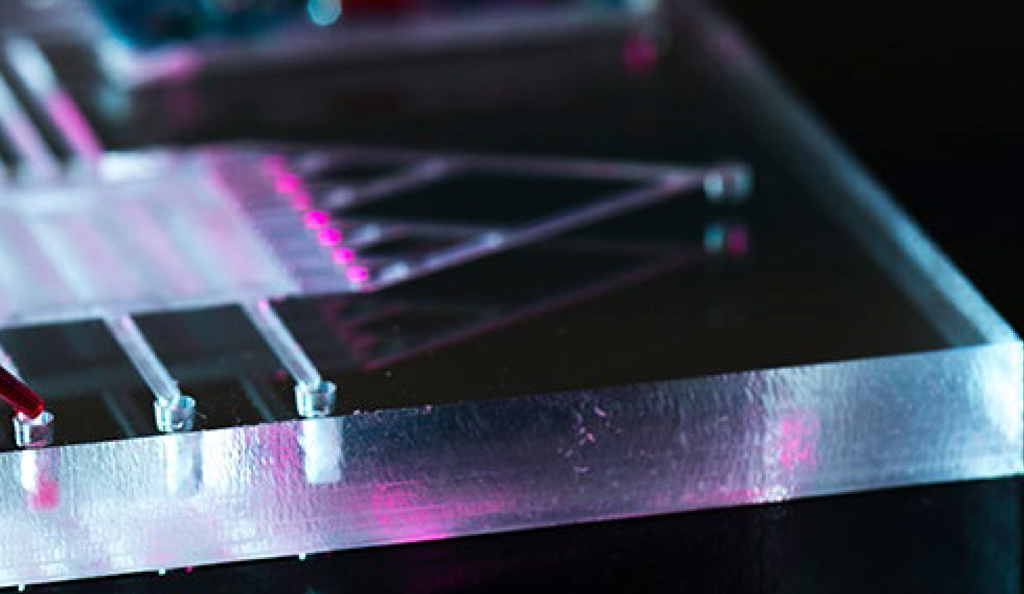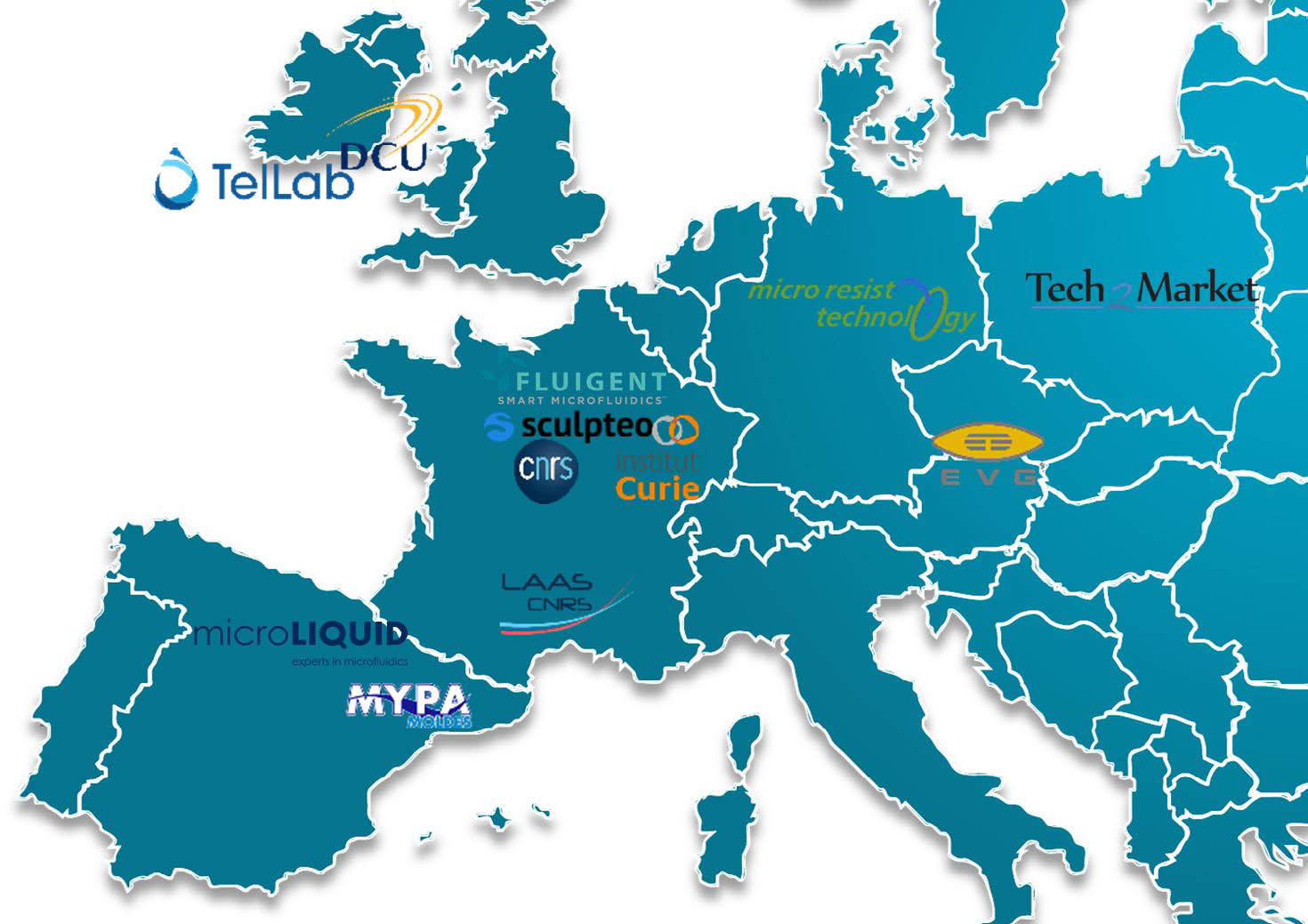Democratising the development and use of microfluidics is the ambition of the European project HoliFAB, which is gathering specialists in the field of microfluidics and from the whole microfluidicsupply chain.
What is microfluidics?
Microfluidics is both a science and a technology that is making it possible to manipulate fluids on micrometric scales. At the crossroads between different scientific disciplines such as physics, chemistry, biology and engineering, microfluidics today represents a vast field of applications with endless possibilities to revolutionise the research field but also the production and analysis industrial markets. Indeed, microfluidics has made it possible to make progress in many fields of research thanks to the control of fluid flow.
Organ-on-a-Chip is a good example of a microfluidics application that is gaining an increasing interest among researchers and industrials, especially in the pharmaceutical industry. Indeed, organ-on-a-chip allows the creation of a study model of a given organ (liver, heart, brain, etc.) by reproducing its three-dimensional arrangement and its physiological state. The living cells of an organ of interest are arranged within channels and chambers of a microfluidic chip to mimic the in vivo physiological state of the cells. This technology provides cells with the necessary oxygen and nutrients thanks to the culture’s medium flow. Also, organ-on-a-chip facilitate modern studies on the cells of a given organ reducing the need for in vitro cell culture models or in vivo tests carried out on animals which are a source of ethical problems in addition to not reliably mimicking human physiology and to be significantly more expensive than microfluidics approaches.
Microfluidics advantages
- A use of very small quantities of samples and reagents in laboratories.
- Cost savings through reduced use of expensive reagents.
- Faster results due to shorter analysis times.
- High resolution and sensitivity in the detection and separation of molecules.
- Use of analysis and diagnostic systems with a smaller footprint compared to lage machines in laboratories.
- Better flow control due to the smooth/laminar flow of fluids in the tiny channels.
Microfluidics difficulties
- Although microfluidics is at an advanced technological stage, it has not yet achieved widespread use.
The evolution and adoption of microfluidics remain limited due to the high costs necessary for its development but also due to the complexity of circuit manufacturing. - The rapid prototyping of microfluidic instruments on an industrial scale is impeded by design based on a complex assembly requiring components from various fields (microfluidics, optics, electronics, etc.). It is these issues and difficulties that HoliFAB is trying to tackle.

What is HoliFAB?
The aim of the HoliFAB project is to facilitate and simplify the adoption of microfluidics by industrialists and scientists by facilitating the design, development, and production of microfluidic-based machines, such as for medical research with organs reproduction or healthcare point-of-care and in situ environmental monitoring. This project brings together a total of ten partners, spread over six European countries (France, Spain, Ireland, Germany, Austria, and Poland), which contribute with their own expertise for the implementation of this project. HoliFAB’s end results is a full commercial offering including prototyping, manufacturing, and marketing of fully integrated microfluidic systems with a holistic approach in the design and marketing of microfluidic instruments. The applications of HoliFAB includes many markets as point-of-care, next-generation sequencing, liquid biopsy, cosmetics, organ-on-a-chip and water quality monitoring.

